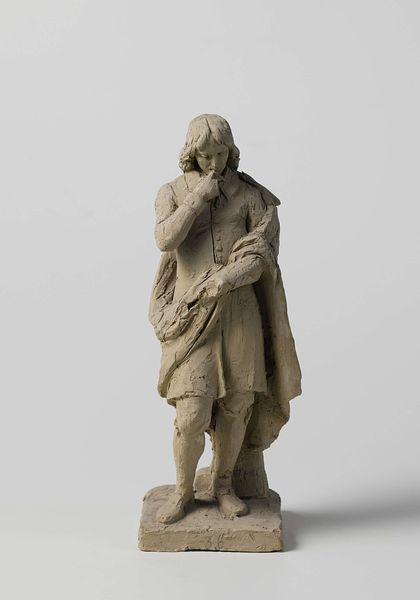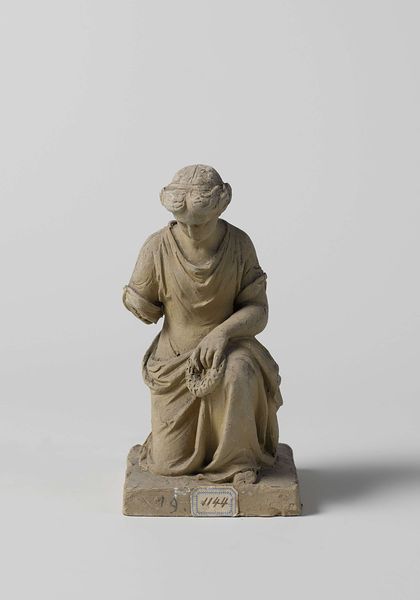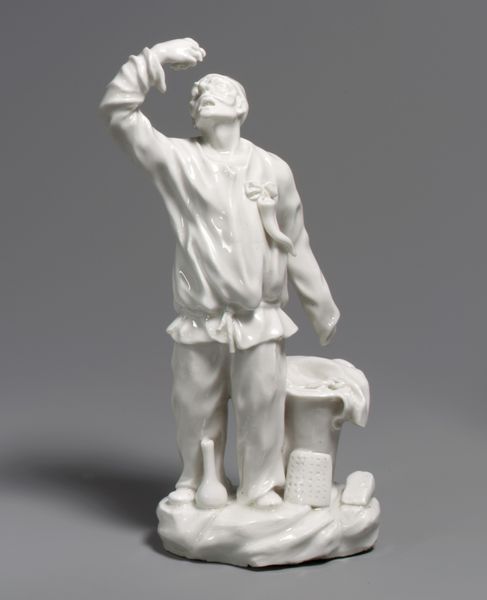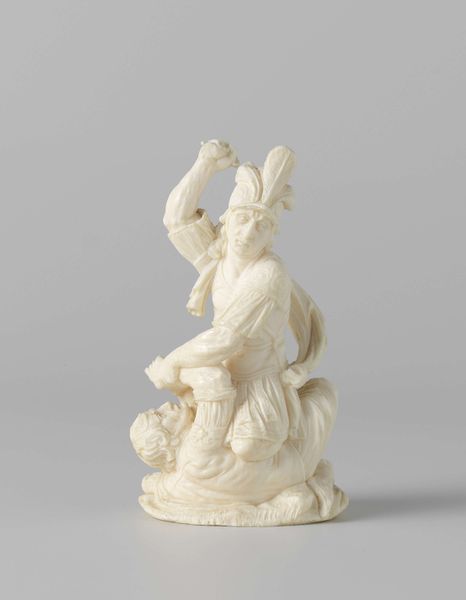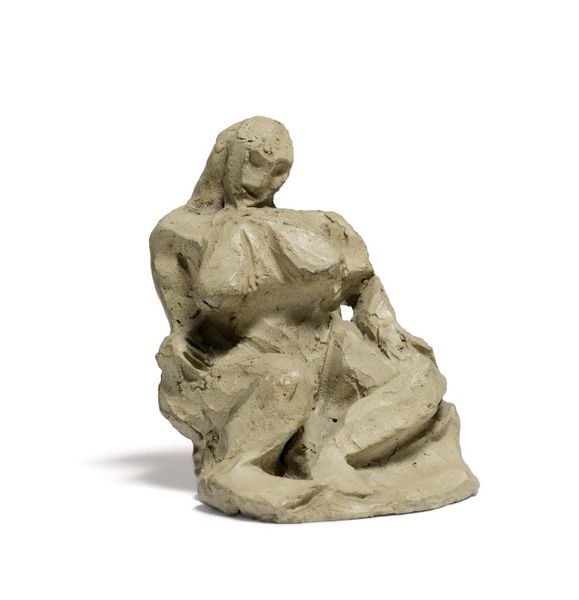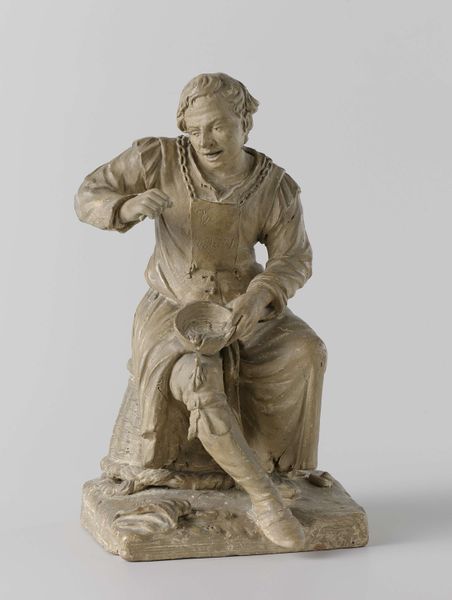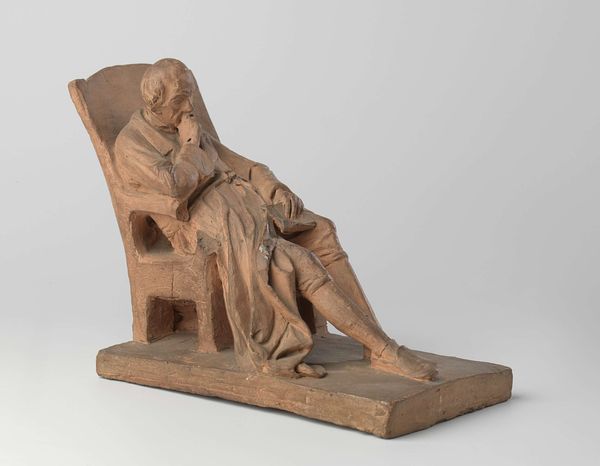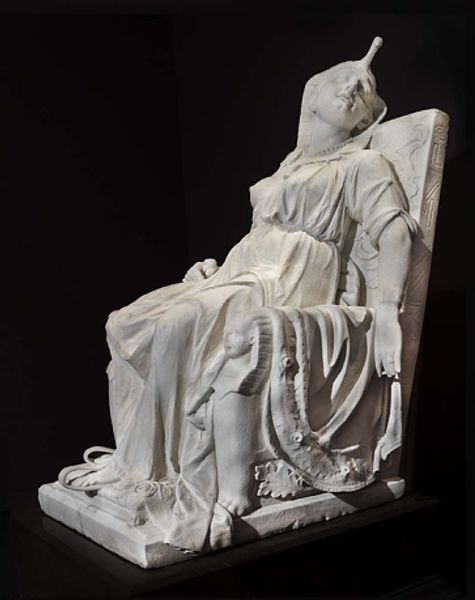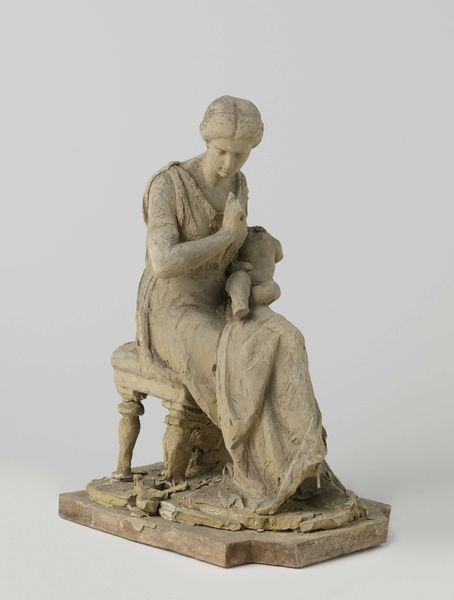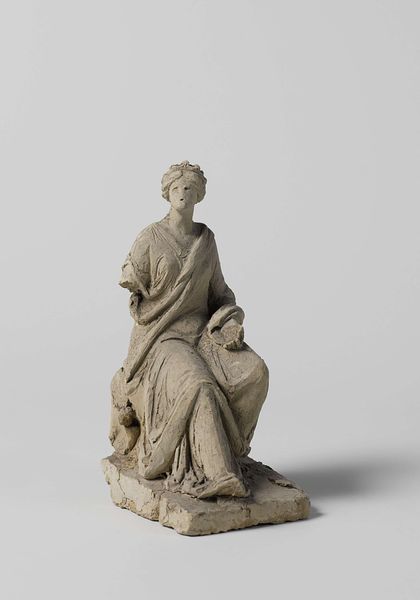
Treurende Pallas, afkomstig van grafmonument van Leonard Mathias van der Noot, wandfiguur, tezamen met twee putti 1746 - 1748
0:00
0:00
sculpture, marble
#
portrait
#
baroque
#
sculpture
#
figuration
#
sculpture
#
academic-art
#
marble
#
statue
Dimensions: width 118 cm, height 122 cm, depth 55 cm, weight 504 kg
Copyright: Rijks Museum: Open Domain
Editor: This sculpture, “Treurende Pallas,” was crafted between 1746 and 1748 by Laurent Delvaux in marble, and it's part of a larger tomb monument. I'm struck by how the draped figure and smooth texture of the marble create a somber and weighty presence. What compositional choices contribute to the artwork's visual impact? Curator: The tension in the composition lies precisely in the interplay between stasis and implied movement. The figure of Pallas is seemingly frozen in grief, yet the folds of her drapery, carved with meticulous detail, suggest a dynamism that belies her pose. Note how the artist manipulates the marble to create a contrast between smooth, polished surfaces and rougher, unfinished areas, drawing attention to the materiality of the sculpture itself. How do you perceive this contrast in texture? Editor: I see it. The smooth skin of Pallas really emphasizes the rough, almost geological quality of the base and the background slab, making it feel both monumental and… well, intentionally unfinished? Does that contribute to the overall feeling? Curator: Precisely. The rough-hewn sections function as a foil to the polished figure, amplifying the emotional intensity through contrasting tactile sensations. The treatment of the negative space around the figure—the way the marble is both present and absent—adds another layer of complexity. Could this contrast represent a transition from the earthly to the spiritual realm? Editor: That's insightful. So, focusing on these artistic choices reveals more about the expression of grief and the suggestion of transitioning beyond physical existence than just historical context? Curator: Exactly. The formal elements – texture, contrast, and composition – work together to create a visually arresting depiction of sorrow and transcendence. Editor: This has changed how I appreciate sculpture; looking beyond subject matter into materiality. Thank you! Curator: An exploration of form yields more insight into meaning than mere interpretation. It's been a pleasure discussing this piece with you.
Comments
No comments
Be the first to comment and join the conversation on the ultimate creative platform.
